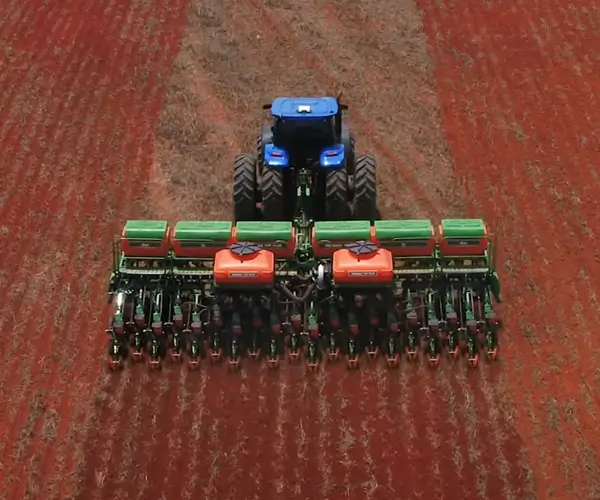part 1:
Unveiling the Power and Precision of the 12V Worm Gear Motor: A Comprehensive Guide
In the world of automation and mechanical drives, few components hold as much versatility and reliability as worm gear motors. Among these, the 12V worm gear motor emerges as a compact yet power-packed solution suitable for an array of applications—from robotics and conveyor systems to aerospace and home automation. But what makes the 12V worm gear motor stand out? Let’s peel back the layers of this intriguing device and uncover why it has become a staple in both industrial and hobbyist realms.

The Anatomy of a Worm Gear Motor
At its core, a worm gear motor combines an electric motor with a worm and worm gear assembly. The electric motor, powered by a 12-volt DC supply in this case, provides rotational motion. This rotation is transferred to the worm—a screw-like gear—embedded within the motor housing. The worm then engages with a worm gear (a wheel with teeth that meshes with the screw thread), translating rotational motion into a different speed and torque profile.
This design is particularly valued for its self-locking properties, meaning that under certain conditions, the gear assembly can hold its position without current consumption, making it excellent for applications requiring positional stability.
Why 12V? The International Standard for Compact Power
The 12V voltage rating makes these motors incredibly accessible and compatible with standard power supplies. They are often used in automotive scenarios, where 12V sources are prevalent, and in portable or battery-powered projects. Plus, their compatibility with common power controllers simplifies integration into complex automation systems.
The Hallmarks of a 12V Worm Gear Motor
High Torque Density: Despite their small size, 12V worm gear motors can deliver impressive torque, ideal for lifting or turning heavy loads. Precision & Control: The inherent design allows for precise movement control, making them suitable for robotic arms, door openers, and other mechanisms requiring accurate positional adjustment. Self-Locking Mechanism: As mentioned, their self-locking nature under certain configurations prevents back-driving, increasing safety and stability.
Design Variations and Customization
Manufacturers produce a variety of 12V worm gear motors, characterized by differences in gear ratio, gear material, size, and output shaft options. Gear ratios can range from modest (e.g., 10:1) to high (e.g., 1000:1), allowing users to select the perfect balance of speed and torque. The choice of gear material—usually either brass, steel, or plastic—impacts durability, noise levels, and load capacity.
Benefits Over Other Gear Types
Compared to spur or bevel gear motors, worm gear motors offer superior self-locking features, quieter operation, and a more compact design without sacrificing torque. Their ability to provide a high reduction ratio in a small package makes them ideal for applications with space constraints.
part 2:
Applications and Advantages of the 12V Worm Gear Motor in Today’s World
As the technology for worm gear motors advances, their use continues to expand across various domains due to their unique advantages and adaptability. Let’s explore some of the most prominent applications and understand how these motors have become essential components in modern engineering.
Applications of 12V Worm Gear Motors
Robotics and Automation
Robotics demands precise control of movement, often in confined spaces. 12V worm gear motors are perfect partners for robotic joints, conveyor belts, and grippers. Their high torque output ensures smooth, controlled movements, even under load, while their self-locking nature prevents unwanted backslide, essential for maintaining robot positions during power loss.
Home and Commercial Automation
Automated doors, window openers, and adjustable furniture—like recliners or adjustable beds—often utilize 12V worm gear motors because they can hold their position reliably without continuous power. This not only conserves energy but also enhances safety, especially in cases of power interruptions.
Automotive and Marine Uses
In vehicles, where 12V power is standard, worm gear motors are instrumental for mirror adjustments, sunroof operation, or trunk opening mechanisms. Their robustness and ability to operate reliably under vibrations and varying conditions make them a go-to choice.
Industrial Machinery
In manufacturing, these motors drive assembly lines, robotic arms, and packaging equipment. Their ability to provide consistent torque and positional stability optimizes process accuracy. Moreover, their customizable gear ratios allow engineers to fine-tune performance to specific task demands.
Advantages That Make Them Stand Out
Durability and Longevity: Using high-quality materials in manufacturing, these motors can withstand long-term operation with minimal maintenance. Quiet Operation: The gear mesh and lubricants contribute to quiet and smooth functioning—an important feature in environments where noise reduction is critical. Ease of Installation and Integration: With standard sizes and mounting options, they can be easily incorporated into existing systems or prototypes. Energy Efficiency: Their design minimizes power consumption while maximizing output, particularly beneficial in battery-powered applications. Cost-Effective: Because of their simple design and mass production, these motors tend to be affordable without sacrificing performance.
Challenges and Considerations
Despite their numerous benefits, some challenges exist. Worm gear motors tend to generate more heat during operation due to the gear friction, which necessitates proper cooling or duty cycle management. Additionally, high gear ratios can lead to increased backlash—a slight play or looseness in the gear system—affecting precision for some applications.
Choosing the right motor involves considering load, speed, gear ratio, and environmental conditions. Testing and proper calibration are often essential to optimize performance.
Future Trends and Innovations
The evolution of materials—such as advanced polymers and composites—aims to reduce friction and improve heat dissipation. Incorporating smart features like embedded sensors for real-time feedback or integrating with IoT platforms is on the rise, enabling more intelligent, predictive control of worm gear motor-driven systems.
In conclusion, the 12V worm gear motor’s blend of power, precision, and adaptability cements its position as a cornerstone in modern mechanical and electronic systems. Whether you’re designing a small robotic arm or a large industrial conveyor, understanding its capabilities and limitations is key to unlocking its full potential.
Leveraging innovations in modular drive technology, Kpower integrates high-performance motors, precision reducers, and multi-protocol control systems to provide efficient and customized smart drive system solutions.




































